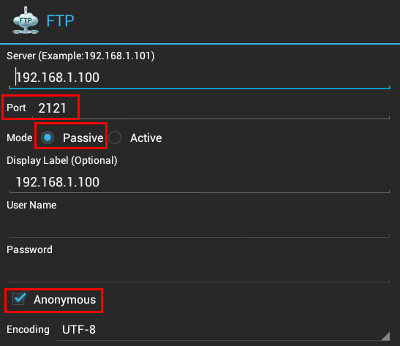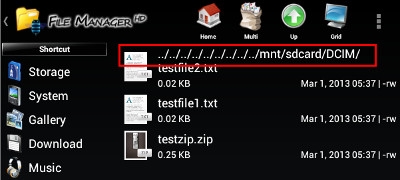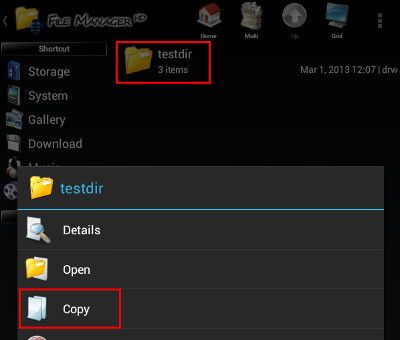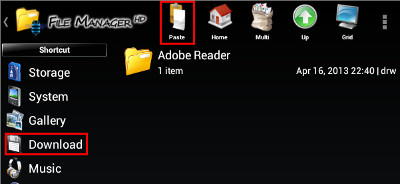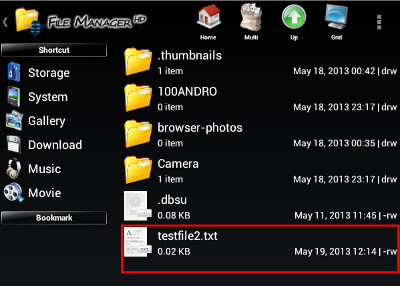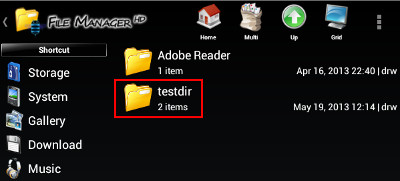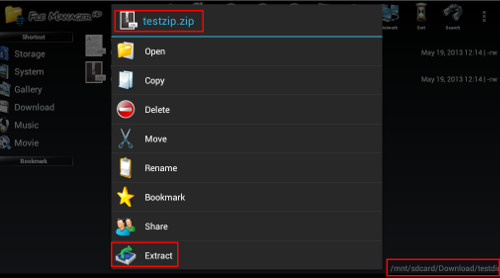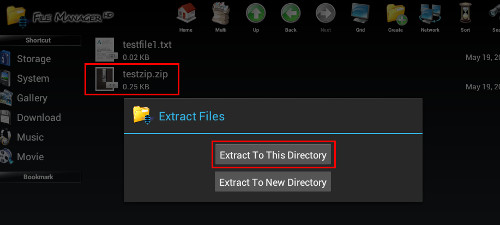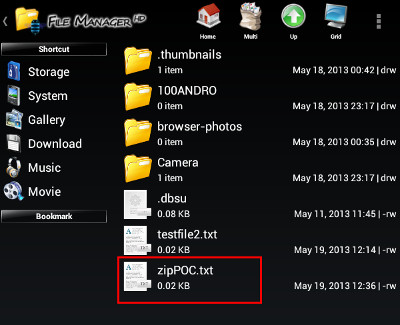

| vuln.sg Vulnerability Research Advisory |
by Tan Chew Keong
 Summary
Summary
Two directory traversal vulnerabilities have been found in Rhythm Software File Manager and File Manager HD. When exploited, these vulnerabilities allow an anonymous attacker to write files to arbitrary locations within the SD card of the user's Android device.  Tested Versions
Tested Versions
 Details
Details
This advisory discloses two directory traversal vulnerabilities in Rhythm Software File Manager and File Manager HD. When exploited, these vulnerabilities allow an anonymous attacker to write files to arbitrary locations within the SD card of the user's Android device. Vulnerability 1 - Directory Traversal in FTP Client The FTP client does not properly sanitise filenames containing directory traversal sequences (forward-slash ../) that are received from an FTP server in response to the LIST command. An example of such a response from a malicious FTP server is shown below. Response to LIST (forward-slash): -rw-r--r-- 1 ftp ftp 20 Mar 01 05:37 /../../../../../../../../../testfile.txt\r\n By tricking a user to download a directory from a malicious FTP server that contains files with fowward-slash directory traversal sequences in their filenames, it is possible for the attacker to write files to arbitrary locations within the SD card of the user's Android device. Vulnerability 2 - Directory Traversal in ZIP Extraction When extacting compressed files from a ZIP archive, the ZIP extraction functionality does not properly sanitise compressed files that have directory traversal sequences in their filenames. By tricking a user to extract a specially crafted ZIP archiving containing files with directory traversal sequences in their filenames, an attacker can potentially write files to arbitrary locations within the SD card of the user's Android device. For example, a malicious ZIP archive can contain a compressed file with the following filename: /../../../../../../../../mnt/sdcard/DCIM/zipPOC.txt An attacker can potentially leverage either of these vulnerabilities to overwrite files in known locations within the SD card in the user's Android device.  POC / Test Code
POC / Test Code
Please download the POC here and follow the instructions below. The instructions below illustrates how this vulnerability can be reproduced using File Manager HD. The steps for reproducing the vulnerability on File Manager are very similar, and hence, will not be repeated. Instructions for testing FTP client (Vulnerability 1):
Hence, by tricking a user to download a directory from a malicious FTP server, an attacker can potentially leverage this issue to write files into arbitrary locations within the SD card in the user's Android device, or to overwrite files in known locations within the SD card. For example, an attacker who is aware of the filenames of the user's photo in the /mnt/sdcard/DCIM/ directory can exploit this vulnerability to overwrite the user's photo files. Instructions for testing ZIP extraction (Vulnerability 2):
 Patch / Workaround
Patch / Workaround
Avoid downloading files/directories from untrusted FTP servers or extracting untrusted archives.  Disclosure Timeline
Disclosure Timeline
2013-05-18 - Vulnerability Discovered. |
| Contact |
| For further enquries, comments, suggestions or bug reports, simply email them to |


